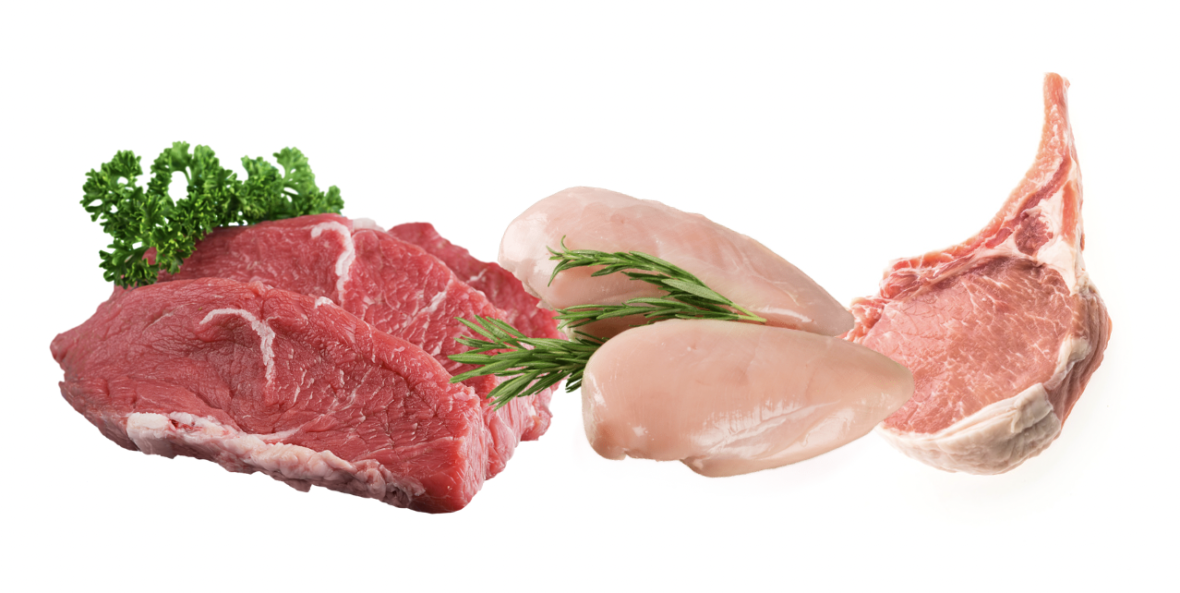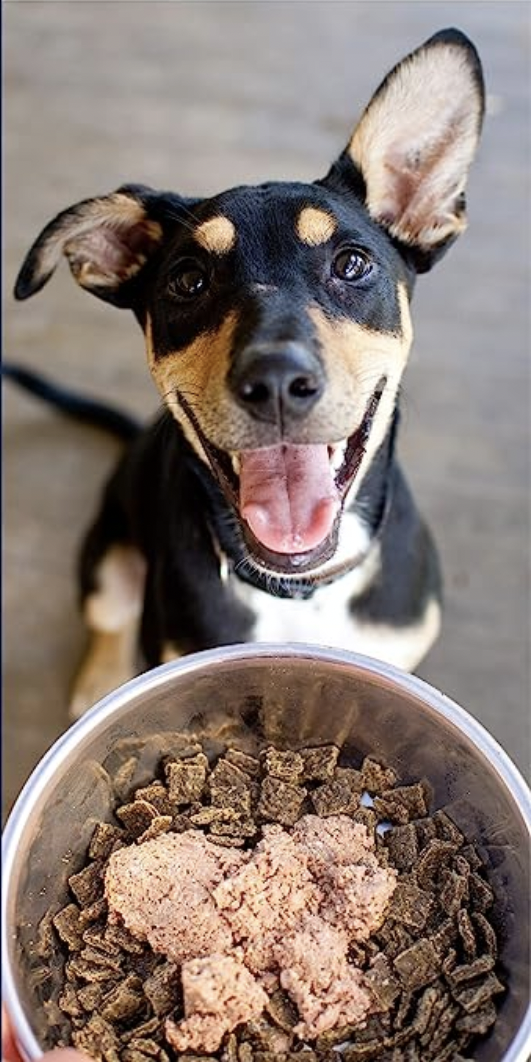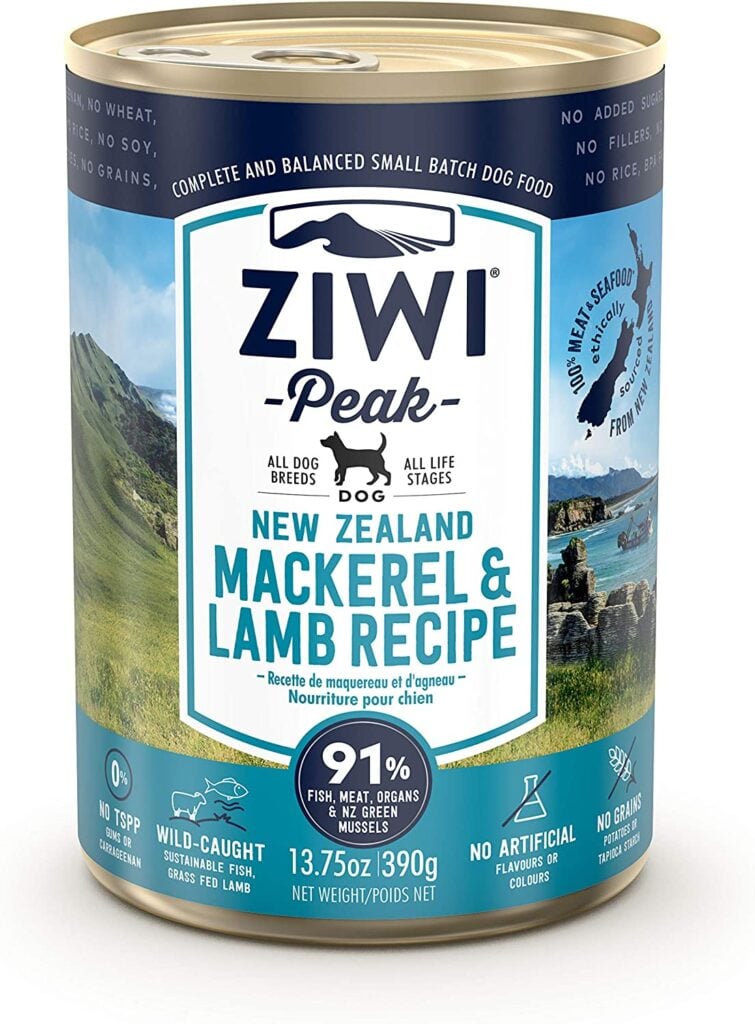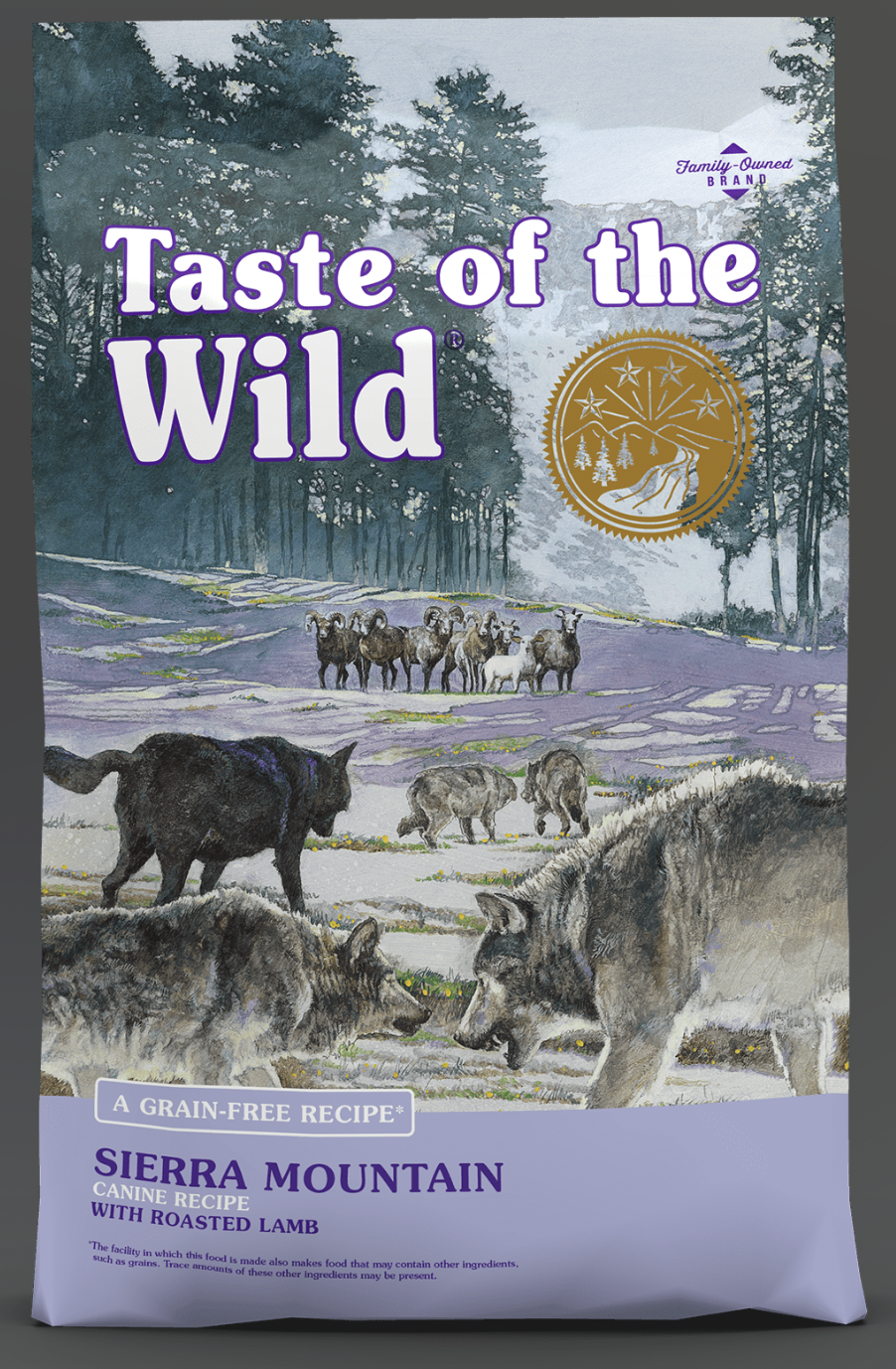The Best Lamb Dog Food: Our Top Picks for Optimal Nutrition


Disclosure: This page contains affiliate links. If you click on these links and make a purchase, we may receive a small commission at no extra cost to you. This helps support our mission to to spread the word about dogs that are still looking for their forever homes. We only recommend products we believe in.
In the realm of pet nutrition, finding suitable alternatives for dogs with allergies has become a pressing concern for devoted owners. Enter lamb, an alternative protein source that has emerged as a compelling solution. Not only does lamb offer a distinct and delectable flavor, but it also holds the promise of being hypoallergenic for canines with dietary sensitivities. Join us on a tantalizing journey as we explore the realm of the best lamb dog food options, delving into how this alternative protein can provide a satisfying and nutritious meal for our beloved furry companions, free from the shackles of allergies.
Lamb vs. Chicken vs. Beef

When it comes to evaluating the nutritional profiles of lamb, beef, and chicken, each protein source brings its own unique qualities to the table.
Lamb stands out for its rich flavor and tends to be higher in essential omega-3 fatty acids compared to beef and chicken. These fatty acids contribute to a healthy coat, joint mobility, and overall well-being.
Beef, on the other hand, is typically higher in iron content, an essential mineral for maintaining healthy blood cells and energy levels.
Chicken, known for its lean meat, offers a generous dose of high-quality protein, supporting muscle development and repair. It is also generally lower in fat compared to lamb and beef.
Ultimately, the choice between these protein sources depends on individual dietary requirements, taste preferences, and any specific health considerations for our canine companions.
Why Should You Pick Lamb For Your Dog?
Lamb is often considered a beneficial protein source for dogs with allergies for several reasons.
Firstly, lamb is considered a novel protein, meaning that it is less commonly used in commercial dog food compared to more common proteins like beef or chicken. This novelty factor reduces the likelihood of dogs developing allergies or sensitivities to lamb protein.
Additionally, lamb is generally less likely to cause allergic reactions in dogs with existing food allergies or intolerances. It offers a hypoallergenic option as it contains different proteins than those found in more commonly used meats.
Lamb is often free from additives, artificial ingredients, and fillers that can trigger allergies in some dogs. These factors, along with its palatability and nutrient profile, make lamb an appealing choice for dog owners seeking a protein alternative to address their canine companions’ allergy-related dietary needs.

Why Lamb Has Fewer Additives
Compared to more commonly consumed meats like beef or chicken, lamb is commonly raised in pasture-based or grass-fed systems. This type of production often emphasizes natural and organic practices, reducing the need for additives such as antibiotics, hormones, or growth promoters.
Additionally, lamb is known for having a shorter supply chain compared to other meats, which can minimize the need for preservation additives. This shorter supply chain means that lamb often goes from farm to table with fewer processing steps involved, decreasing the likelihood of additives being introduced during handling and transportation.
Also, lamb’s distinct flavor and tenderness are often prized, and the focus is on preserving its natural qualities rather than masking or enhancing them with additives. As a result, lamb dog food products often emphasize a simpler ingredient list, consisting primarily of lamb meat and other essential nutrients, making it a popular choice for those seeking a more natural and additive-free diet for their dogs.
 Best Air Dried: ZIWI Peak Lamb Recipe
Best Air Dried: ZIWI Peak Lamb Recipe

Source: ZIWI
Did you know that lamb is one of the best proteins for dogs, and it’s lean, high-in protein, and considered less likely to trigger allergies? ZIWI’s air-dried lamb dog food recipe is a great option for a dog trying to lose weight, and could even be used as healthy treats in place of high calorie cookies and biscuits.
| First 5 Ingredients | Lamb, Lamb Tripe, Lamb Lung, Lamb Heart, Lamb Liver |
| Guaranteed Analysis (crude) | 38% Protein — 30% Fat — 3% Fiber — 14% Moisture |

 Best Raw: We Feed Raw Lamb Formula
Best Raw: We Feed Raw Lamb Formula

We Feed Raw is one of our favorite raw dog food brands thanks to their limited, high-quality ingredients. Each recipe is made primarily from animal proteins and includes an essential mix of vitamins and minerals.
Since Boxers are sometimes prone to allergies, we recommend choosing a novel protein like venison, which is less likely to cause an allergic reaction. This formula also includes added Omega-3s to help enrich your Boxer’s skin and coat while supporting healthy joints. Save 25% off your first subscription trial box.
| First 5 Ingredients | Venison, Beef Heart, Beef Liver, Beef Kidney, Beef Neck with Bone |
| Food Type | Raw, grain-free |
| Guaranteed Analysis (crude) | 13% Protein – 10.7% Fat – 1% Fiber – 69.4% Moisture |
| Feeding Instructions | Feed 1 lb per day or ½ lb per meal* |
| Cost Per Meal | $5 per meal*, $49.99 for 5 lbs. |

3.  Best Canned: Ziwi Peak Canned Mackerel & Lamb Recipe
Best Canned: Ziwi Peak Canned Mackerel & Lamb Recipe

Fish like Mackerel is high in Omega-3 fatty acids, which are essential for breeds like the Boxer. Easy on the tummy, easy to serve, and easy to store, Ziwi Peak’s canned food is one of the most convenient options on this list.
Ziwi also strives to source ethical and sustainable ingredients, so you can feel good about where your dog’s food is coming from.
| First 5 Ingredients | Mackerel, Water, Lamb, Lamb Lung, Chickpeas |
| Food Type | Wet, grain-free |
| Guaranteed Analysis (crude) | 10.5% Protein – 4% Fat – 2% Fiber – 78% Moisture |
| Feeding Instructions | Feed 2 ⅔ cans per day or 1 ⅓ can per meal* |
| Cost Per Meal | $10.32 per meal – $88.08 for (12) 13.75 oz cans |

 4. Best Dry: Taste of the Wild Sierra Canine Formula
4. Best Dry: Taste of the Wild Sierra Canine Formula

Taste of the Wild Sierra Canine Formula is a top-tier dog food, boasting a lamb-based recipe crafted from premium ingredients. This dry dog food stands out from the pack by eschewing the grains commonly found in subpar alternatives, while incorporating an array of vibrant and antioxidant-rich fruits. Among the lineup of Taste of the Wild’s offerings, their lamb recipe reigns supreme and deserves special recognition.
Enriched with fortifying probiotics, this formula ensures smooth and trouble-free digestion for your furry companion. Made in the USA, Taste of the Wild adheres to the strictest safety protocols, instilling confidence in pet owners regarding the product’s quality and reliability. The addition of delectable fruits and vegetables such as blueberries, raspberries, peas, and tomatoes further bolsters its nutritional value, while Omega-fatty acids contribute to a lustrous and healthy coat.
For discerning pet owners seeking a high-caliber, easily digestible meal brimming with essential vitamins, minerals, and beneficial supplements, Taste of the Wild proves to be an exceptional choice. By excluding grains and soy from its recipe and incorporating probiotics, it emerges as an optimal selection for dogs with sensitive stomachs. However, it is important to note that this premium quality comes at a higher price point compared to other options on the market. Consequently, budget-minded shoppers may find it less suitable for their needs.

FAQ – The Best Lamb Dog Food
What is lamb meal in dog food?
Lamb meal is a concentrated form of lamb protein that is created by removing most of the moisture from the meat. It is a high-quality source of protein that can be found in many dog foods.
Can dogs be allergic to lamb dog food?
Yes, dogs can develop allergies to lamb dog food, just like any other food. While lamb is considered a hypoallergenic protein source, individual dogs may still have sensitivities or allergies to it. It is important to monitor your dog for any adverse reactions or consult with a veterinarian if you suspect an allergy.
What are the benefits of feeding my dog lamb and rice dog food?
Lamb and rice dog food can provide your dog with a high-quality source of protein and carbohydrates. It can also be beneficial for dogs with sensitive stomachs or food allergies.
Is Purina One lamb and rice a good dog food?
We typically prefer raw, fresh frozen or air-dried dog food options.
What are some of the most popular lamb and rice dog foods?
-Blue Buffalo Life Protection Lamb & Brown Rice Recipe
-Nutro Wholesome Essentials Adult Lamb & Rice Recipe
-Purina ONE SmartBlend Lamb & Rice Formula
Is white rice appropriate for diabetic dogs?
White rice may not be appropriate for diabetic dogs as it can raise their blood sugar levels.
How much lamb and rice dog food should I feed my dog?
The amount of lamb and rice dog food you should feed your dog depends on their age, weight, activity level, and other factors. You should follow the feeding instructions on the label or consult with your veterinarian.
Can I mix lamb and rice dog food with other types of dog food?
Yes, you can mix lamb and rice dog food with other types of dog food as long as you do so gradually to avoid upsetting your dog’s stomach.
What are some common ingredients in lamb and rice dog food? Some common ingredients in lamb and rice dog food include:
-Lamb
-Rice
-Barley
-Oatmeal
-Peas
-Sweet potatoes
How long does a bag of lamb and rice dog food last?
The length of time a bag of lamb and rice dog food lasts depends on the size of the bag and how much you feed your dog each day. You should follow the feeding instructions on the label or consult with your veterinarian.
What is lamb meal in dog food?
Lamb meal is a concentrated form of lamb meat that has been rendered and dried. It is commonly used in dog food as a high-quality source of protein. Lamb meal provides essential amino acids and is highly digestible for dogs.
Are there any benefits to feeding dogs lamb and rice dog food?
Lamb meal is a concentrated form of lamb meat that has been rendered and dried. It is commonly used in dog food as a high-quality source of protein. Lamb meal provides essential amino acids and is highly digestible for dogs.
Are there any benefits to feeding dogs lamb and rice dog food?
Lamb and rice dog food can have several benefits. Lamb is a lean protein source rich in essential amino acids, while rice offers easily digestible carbohydrates. This combination may support healthy digestion, provide energy, and be gentle on the stomach for dogs with sensitivities.
Can lamb and rice dog food help with food allergies?
Lamb and rice dog food is often recommended for dogs with food allergies or sensitivities. By eliminating common allergens like chicken, beef, or grains, and incorporating lamb and rice as alternative ingredients, it may help alleviate allergic reactions in some dogs.
Is lamb and rice dog food suitable for all dog breeds and ages?
Lamb and rice dog food can be suitable for most dog breeds and ages, but it is essential to consider individual nutritional requirements. Puppies, senior dogs, or dogs with specific health conditions may require specialized formulas tailored to their needs.
How can I transition my dog to lamb and rice dog food?
To transition your dog to lamb and rice dog food, gradually introduce it into their diet by mixing it with their current food over a period of 7 to 10 days. Start with a small amount of the new food and gradually increase the proportion while reducing the old food until the transition is complete.
Are there any potential drawbacks to feeding dogs lamb and rice dog food?
While lamb and rice dog food can be beneficial for many dogs, it may not be suitable for those with specific dietary requirements or allergies to lamb. Additionally, individual dogs may have unique sensitivities or preferences, so it is important to monitor their response and consult with a veterinarian if needed.
Can lamb and rice dog food be a long-term feeding option?
Lamb and rice dog food can be a suitable long-term feeding option for dogs, especially those with food sensitivities. However, it is important to ensure a balanced diet by selecting a reputable brand, considering your dog’s individual needs, and seeking guidance from a vet.
